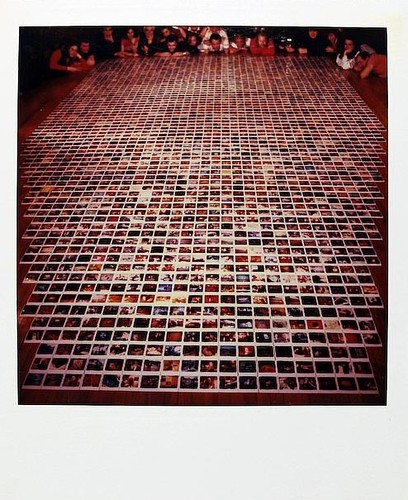I’ve had three separate conversations with three separate people over a period of about three days (sounds like that bad Jim Carry “scary” movie) all centered around one idea.
A photograph is an illusion. An illusion, not an allusion…though I’m sure you could allude to things in photographs…The whole concept of snapshots, in whatever field of study, gives the illusion that you are capturing life. But you are not. What I love about quality photographers is that they’re able to capture images that I did not even see. We may be looking at the same object but they see and capture that object from a perspective that was invisible to me. The photographer captured an aspect of their own perspective, but they did not capture reality. Reality is three dimensional, it is fluid, and dynamic.
But don’t get caught up too much in the photography application, because I think it’s a much bigger thing that just photos. My wife was learning the other day about how we test our bodies. X-rays, blood tests, etc. are all ways of taking snapshots of our body in order to asses health. But the problem with these snapshots is that in reality our bodies never sit still as they do for those snapshots. In reality our aches and pains are rarely experienced statically and neither does our body function internally in a static manner. At any given moment our body has numerous functions, cycles, and changes. If we then take a quick snapshot of what is happening in our body at a given moment all we learn is what is happening in our body at that given moment or in that particular stance or with that particular food in our body or…etc. Our body is so incredibly dynamic and fluid that snapshots do not do it justice! They do not capture health (or lack thereof) effectively. And, yet, virtually all of our methods for testing our bodies are based upon a static image.
The third aspect that this idea of a deficit snapshot came up is in defining culture. When someone asks me to tell them about Portland or Vancouver they’re usually asking me to explain the “culture of the Northwest”. What I proceed to do is define a snapshot of the NW. Funky, weird, liberal, creative, coffee, beer, McMenamins…This is what cultural anthropology originally set out to do, define and articulate culture. Missionaries will spend time studying the culture that they are preparing to go serve. We speak of churches having a specific culture. But what in the world does that even mean?! If a specific church has a culture are we referring to the youth group? Are we referring to how the elders operate? Are we referring to their history? What about the young families that are trying to bring change? What “culture” are we referring to? Culture is so incredibly fluid and changing, like a stream, that rather than being capable of capturing it with a snapshot maybe our goal should be to run along side it as much as we’re capable. A snapshot gives the illusion of understanding, but in reality all you’ve captured is your own lens. When you describe or capture a culture all you’ve done is created an image that says “here’s how I view this world in front of me from my own unique perspective” even if a missionary goes to a rural African village, lives in a hut for thirty years, an in every way lives with (and like) the people, he will still always be a white dude that made a choice to live in that manner and could at any moment choose to leave. He will always be understanding that culture from his perspective.
Snapshots serve a purpose, but I fear that in many ways we have allowed them to too greatly define reality as we understand and articulate it. I wonder about the snapshots we’ve used to define faith, the Biblical story, and what it means to follow Jesus.
I think our greatest hope is in the pursuit of bigger ears (listening), bigger hearts (empathy), and an understanding of our limits.
* Please don’t get me wrong, I love photography!

